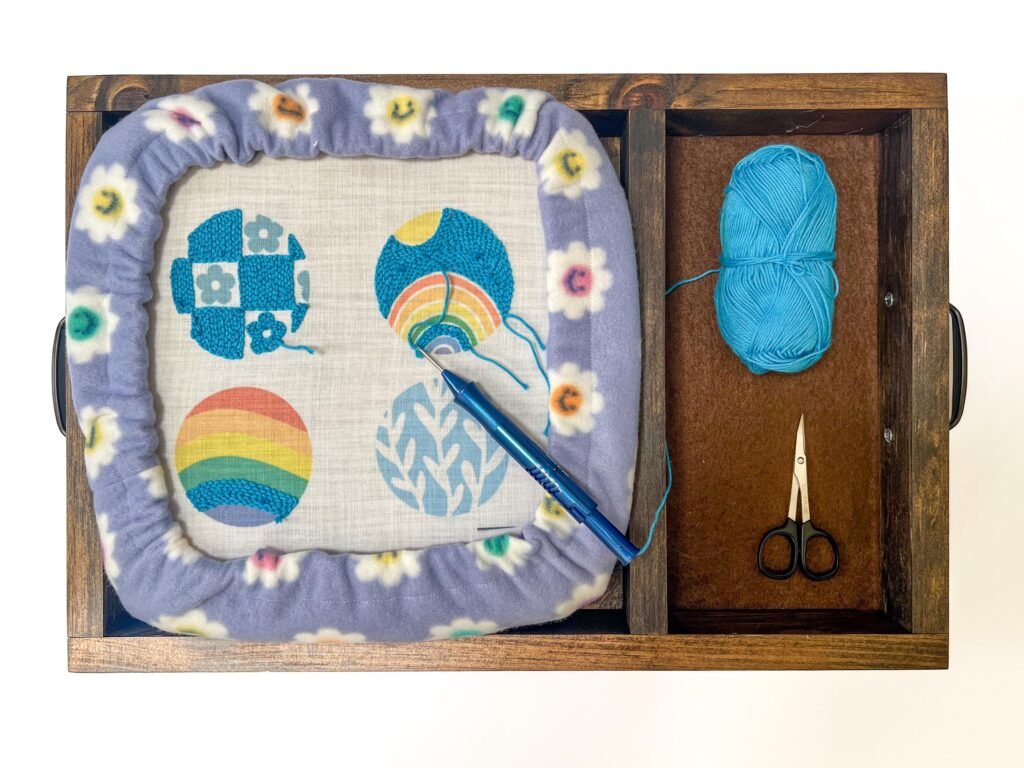The Loopy Tale: A Brief History of Punch Needle Embroidery
Punch needle embroidery, with its textured loops and playful patterns, has been making waves in the crafting world—popping up on pillows, wall art, and even clothing. But this fluffy, tactile art form isn’t just a passing trend. It has deep historical roots and a fascinating evolution that spans centuries, continents, and cultures. Whether you’re a seasoned maker or just punch-needle curious, let’s dive into the rich history of this time-honored craft.
What Is Punch Needle Embroidery?
Before we travel back in time, it’s helpful to understand what punch needle embroidery actually is. At its core, punch needle is a type of embroidery that uses a hollow needle tool to “punch” loops of thread or yarn through a fabric, typically monk’s cloth, linen, or weaver’s cloth. The result is a looped surface on one side and a flatter, stitched surface on the other. It’s a bit like rug hooking’s cousin—faster than traditional embroidery and delightfully satisfying to watch in action.

Origins: Monks, Rugs, and Ancient Techniques
The exact origins of punch needle embroidery are tricky to pin down, but its lineage is closely connected to rug-making traditions that date back hundreds, if not thousands, of years. One of the earliest known forms of related work comes from ancient Egypt, where looped pile textiles were created using a similar technique.
The version that’s most recognized today likely evolved from traditional rug hooking practices in the 17th and 18th centuries. In colonial New England and Eastern Canada, settlers made hooked rugs from fabric scraps, punching or pulling loops through a base fabric like burlap or feed sacks. These rugs were both decorative and practical, created out of necessity with limited materials.
Another theory traces it to medieval Europe, where it was allegedly practiced by monks to create intricate religious garments and altar cloths. This origin story even led to the term “Russian needle punch,” which still appears today, referencing both the region and a specific style of the tool used.
The 19th Century: From Homespun to High Demand
In the 1800s, this technique gained popularity as commercial rug-making began to flourish. The development of more refined tools, including early mechanical needles, made it easier to mass-produce looped textiles. It was during this time that patterns and kits began circulating among home crafters in North America and Europe.
This era also marked the beginning of punch needle as a leisure activity. As industrialization spread, people—particularly women—had more access to craft supplies and free time, and punch needle became a common domestic pastime alongside quilting, knitting, and embroidery.
The 20th Century Revival of Punch Needle
After falling out of fashion in the early 20th century, punch needle embroidery experienced a revival in the 1960s and ’70s. With a growing interest in DIY home décor and fiber arts, crafters embraced its cozy, handmade look. Vintage kits from this era often featured floral motifs, folk art animals, and shag-inspired wall hangings.
In the 1990s and early 2000s, it’s popularity dipped again—but it wouldn’t stay down for long.
A Modern Crafting Comeback
In recent years, punch needle has experienced a full-blown resurgence. Thanks to platforms like Instagram, Pinterest, and Etsy, the craft has found a fresh audience of makers drawn to its approachable technique and bold aesthetic. Contemporary artists have reimagined it for modern tastes—think abstract wall hangings, playful shapes, and color-blocked designs in trendy palettes.
Today’s tools are more ergonomic, patterns are more diverse, and the fibers range from traditional wool to eco-friendly recycled yarns. You can even find kits aimed at total beginners, complete with pre-printed designs and everything you need to get started.
Why Is Punch Needle Sticking Around
So what’s behind the renewed obsession? For many, it’s the satisfying rhythm of the technique—the repetitive motion of punching is almost meditative. Others are drawn to the texture, the speed (it’s faster than traditional embroidery), or the freedom to go big with bold, graphic shapes.
At its heart, punch needle embroidery is a blend of heritage and innovation. It’s an art form that carries the history of makers before us while offering endless possibilities for modern expression.
Whether you’re crafting a cozy wall hanging or simply stabbing some yarn into cloth for stress relief, you’re part of a long, loopy lineage. And the best part? This is a history you get to touch—one soft, satisfying punch at a time. Check out our shop page or Etsy store for supplies to get you started on your journey.